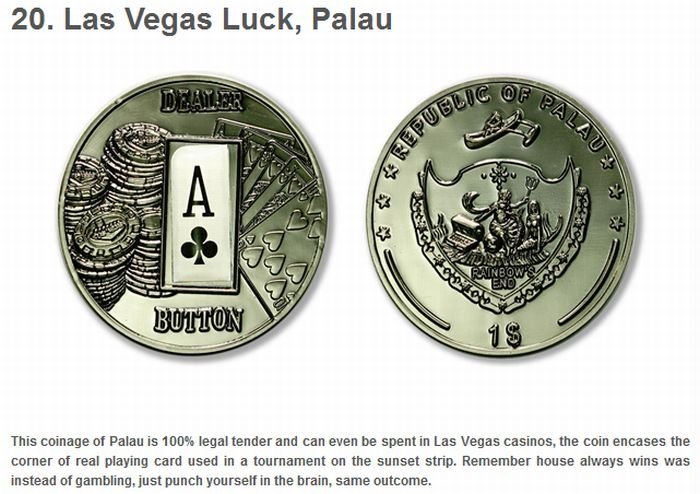|
|
Coins Around The World
|
The United States is unusual in that it has only slightly modified its coinage system (except for the images and symbols on the coins, which have changed a number of times) to accommodate two centuries of inflation. The one-cent coin has changed little since 1856 (though its composition was changed in 1982 to remove virtually all copper from the coin) and still remains in circulation, despite a greatly reduced purchasing power. On the other end of the spectrum, the largest coin in common circulation is 25 cents, a low value for the largest denomination coin compared to other countries. Recent increases in the prices of copper, nickel, and zinc, mean that both the US one- and five-cent coins are now worth more for their raw metal content than their face (fiat) value. In particular, copper one-cent pieces (those dated prior to 1982 and some 1982-dated coins) now contain about two cents worth of copper. Some denominations of circulating coins that were formerly minted in the United States are no longer made. These include coins with a face value of half a cent, two cents, three cents,and twenty cents. (The Half Dollar and Dollar coins are still produced, but mostly for vending machines and collectors.) The United States also used to coin the following denominations for circulation in gold: One dollar, $2.50, three dollars, five dollars, ten dollars, and twenty dollars. In addition, cents were originally slightly larger than the modern quarter and weighed nearly half an ounce, while five cent coins were smaller than a dime and made of a silver alloy. Dollars were also much larger and weighed approximately an ounce. One dollar coins are no longer produced and rarely used. The U.S. also has bullion and commemorative coins with the following denominations: 50¢, $1, $5, $10, $25, $50, and $100.
Other uses
Some convicted criminals from the British Isles who were sentenced to transportation to Australia in the 18th and 19th centuries used coins to leave messages of remembrance to loved ones left behind in Britain. The coins were defaced, smoothed and inscribed, either by stippling or engraving, with sometimes touching words of loss. These coins were called "convict love tokens" or "leaden hearts". A number of these tokens are in the collection of the National Museum of Australia.
|
|









